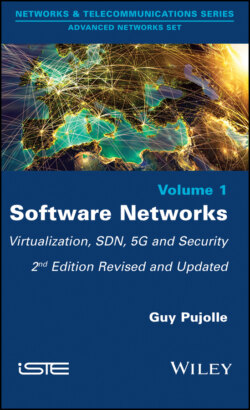Читать книгу Software Networks - Guy Pujolle - Страница 32
2.8. Application layer
ОглавлениеThe application layer is essentially formed of Clouds that contain the application virtual machines. These may be business machines or network element management machines – responsible, for instance, for the managing of handovers or determination of the best access, at any given time, for a multi-technology terminal. Thus, this layer essentially contains the operating systems for the Cloud. The best-known such system is, undoubtedly, OpenStack. It is a Cloud management system that controls large sets of resource offering processing power, storage and network resources. OpenStack has already had more than twenty releases in only nine years (start of 2011 to start of 2019). The latest version is Stein, released at the start of 2019. OpenStack is open source software with an Apache license.
The OpenStack architecture is shown in Figure 2.13. It is modular, and contains numerous modules, such as Nova for computation, Swift for storage, Glance for the imaging service, Dashboard for the settings and control panel, etc.
Figure 2.13. The OpenStack system
The part that is of interest to us most in this book is Neutron, which handles the network module. In this context, OpenStack provides flexible network models to take care of the applications. In particular, OpenStack Neutron manages the IP addresses, and allows for static addresses or uses DHCP. Users can create their own network in which SDN technology is used. OpenStack has numerous extensions, such as IDS (Intrusion Detection Systems), load balancing, the option to deploy firewalls and VPNs.
To conclude this section and summarize the SDN architectures in place, in Figure 2.14, we have shown the different components that have been put in place to achieve overall operation. The top and bottom parts represent the Cloud and the physical/logical networks. Between these two points, management and control of the network and of the applications needs to take place. In terms of the business application, we find sets of software modules – mostly open source – to deploy cloud-computing infrastructures, and more specifically IaaS (Infrastructure as a Service). On the contrary, we find the applications to establish a virtualized network structure, with the commands necessary to handle the business applications.
Figure 2.14. The overall architecture of SDN solutions
